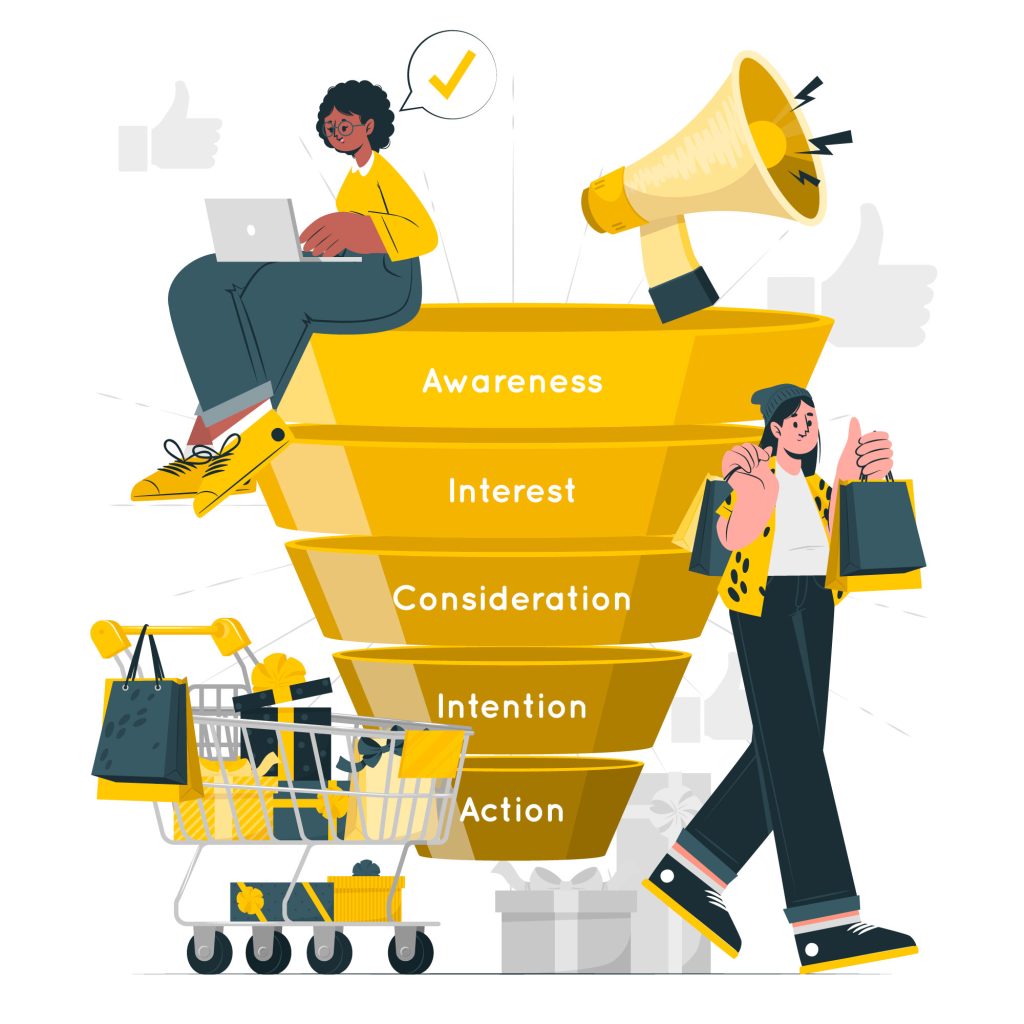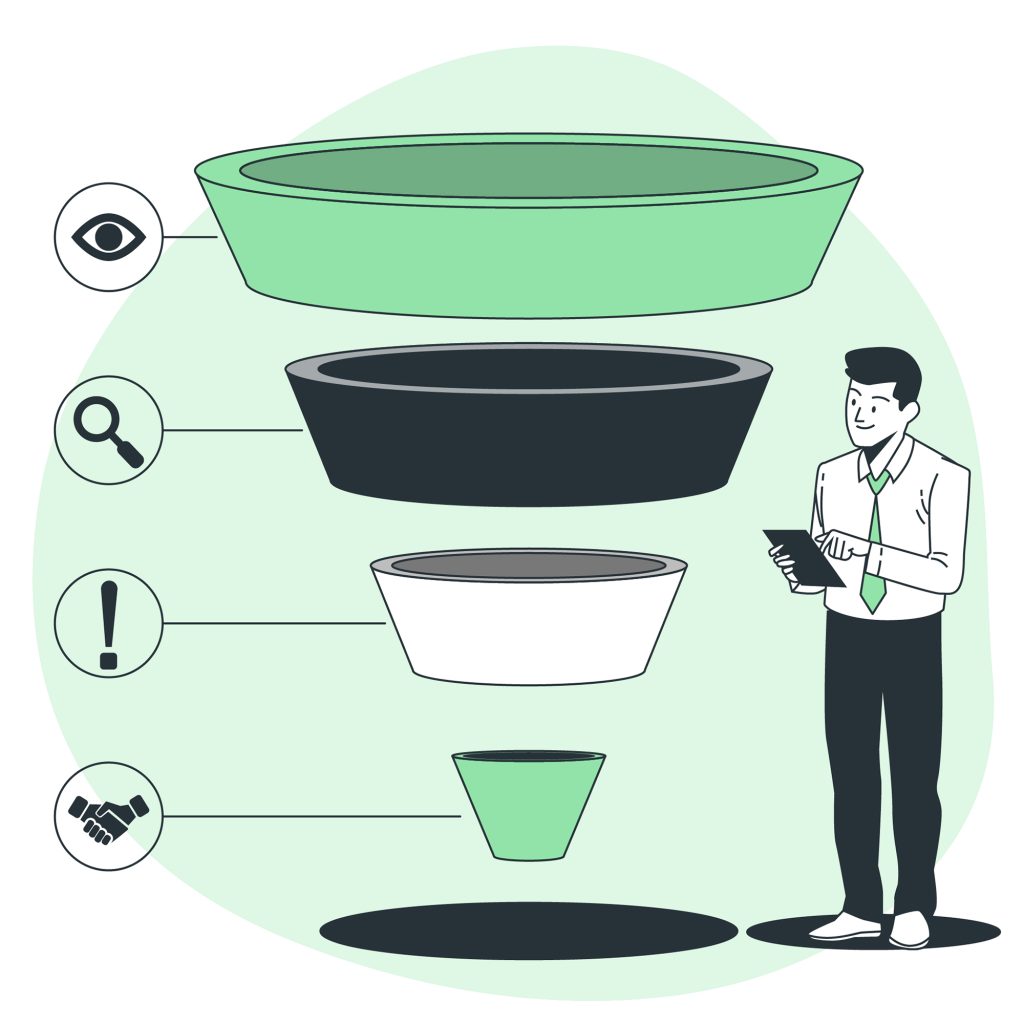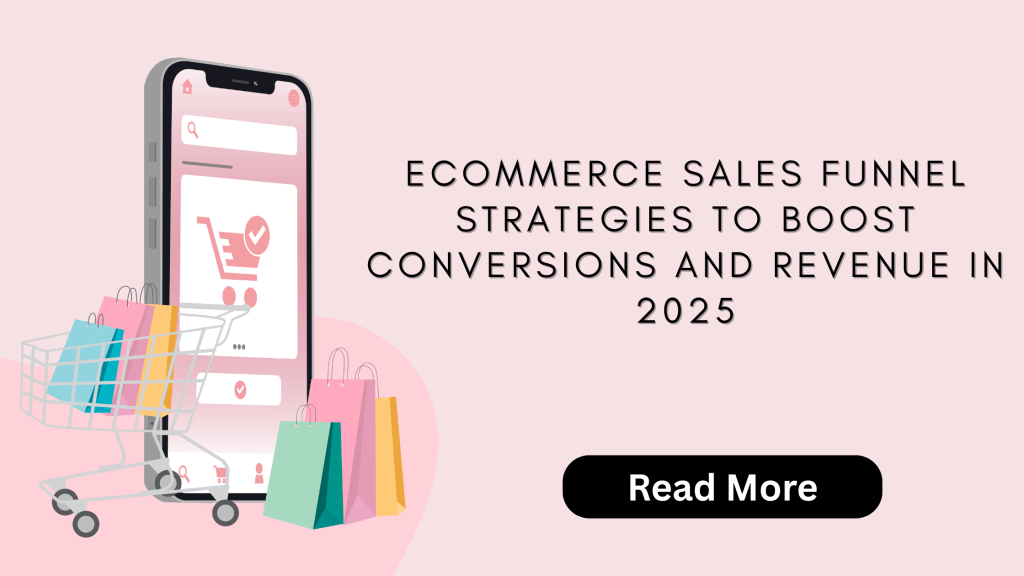A client of ours started a specialized skincare line last year. Excellent products, a lovely website, and even a respectable advertising budget. Three months later, however, conversions were dreadful. But why?
Despite having traffic, she lacked a strategy to direct guests from curiosity to payment. In only two months, she increased her conversion rate by 300% after concentrating on creating a good e-commerce sales funnel, step by step.
It’s not easy to grow an e-commerce firm in 2025. Consumer behavior changes quickly, competition is intense, and you’re losing a lot of money if your marketing funnel isn’t working.
An e-commerce sales funnel might be your unsung hero in this situation. Let’s explore the funnel tactics that can actually turn surfers into devoted customers and clicks into conversions.
What is Ecommerce Sales Funnel?
In basic terms, an e-commerce sales funnel is the path a consumer follows from the time they learn about your business to the point at which they buy something (and hopefully become a repeat customer).
It is referred to as a “funnel” because, while many will visit, fewer will investigate, and even fewer will convert at each level.

Product promotion alone isn’t enough for an e-commerce sales funnel to be effective. Leading prospective clients through a considerate journey that fosters trust, addresses their issues, and eventually wins their business is the goal.
The classic funnel stages usually look like this:
- Awareness: They discover you.
- Interest: They start engaging with your brand.
- Decision: They weigh the options.
- Action: They hit that “Buy Now” button.
Top Mistakes Brands Make With Their Sales Funnel
Even seasoned brands slip up when building or optimizing their ecommerce sales funnel. Here are a few common pitfalls:
1. One-size-fits-all messaging
They disregard each visitor’s position in the funnel and treat them all equally. A hard pitch isn’t appropriate for someone who is just learning about your brand. They require instruction, not coercion.
2. Overcomplicated checkout process
If your checkout takes too many clicks or feels clunky on mobile, you’re bleeding conversions.
3. No retargeting or follow-up
Most customers don’t convert on their first visit. Brands that skip email follow-ups or retargeting ads miss out big time.
4. Lack of trust-building elements
If you’re not showcasing reviews, testimonials, or guarantees, you’re not giving people a reason to trust you.
Stage-by-Stage Funnel Strategies That Actually Work in 2025
Awareness Stage
You are establishing your brand at the Awareness stage. First impressions are crucial in this situation because people don’t yet know you.

What works:
- Organic material: YouTube, Pinterest, blogs, and SEO are all excellent places to find content.
- Value, not a hard pitch: It is the goal of paid advertisements on Facebook, Instagram, and TikTok.
- Influencer collaborations: Here, trust by association is quite effective.
Interest Stage
Now that they know you exist, it’s time to turn curiosity into engagement.
What works:
- Lead magnets: Offer free resources, discounts, or guides in exchange for an email.
- Email nurture sequences: Once you have their email, build a series that introduces your brand, values, and bestsellers.
- Product education: How-to videos, testimonials, product comparison blogs—all help build interest.
Decision Stage
Here is where things may go any way. They need a little more encouragement, but they are intrigued.
What works:
- Social evidence: It includes user-generated content (UGC), reviews, and testimonials.
- Signals of trust: Secure checkout badges, money-back guarantees, and free delivery..
- Retargeting advertisements: Remind them of the items they last viewed or left in their cart.
Action Stage
They’re prepared. Don’t lose them right away.
What functions:
- Simplified checkout: Support for numerous payment methods, mobile-first design, and fewer clicks.
- Upsell after purchase: Make recommendations for other items or savings for the future.
- Emails of gratitude: Encourage recommendations or reviews, provide encouragement, and reaffirm the buying choice.
Pro tip: Make the buying experience so smooth that they remember it—and come back for more.
Wrap Up
Building an ecommerce sales funnel isn’t about tossing together a bunch of tactics and hoping for the best. It’s about creating a journey that respects your customer’s mindset at every stage—from “Who are you?” to “Take my money.”
Webiators Technologies specializes in tailored eCommerce website development services, high-converting ecommerce solutions that drive real results.
FAQ’s
Ans: It depends on your tech stack and offer, but most funnels can be set up in 2–4 weeks, with ongoing optimization over time.
Ans: Marketing funnels focus more on brand awareness and lead generation, while ecommerce sales funnels are designed specifically to drive purchases and repeat sales.
Ans: Absolutely. In fact, smaller brands often see the biggest gains because even small tweaks can dramatically improve conversion rates.
Ans: Not necessarily. Many platforms like Shopify, Ans: WooCommerce, and BigCommerce offer built-in tools or integrations to build funnels without needing custom code.
Ans: Monitor KPIs like click-through rate (CTR), conversion rate, cart abandonment, and customer lifetime value (CLV). If those are improving, you’re on the right track.


